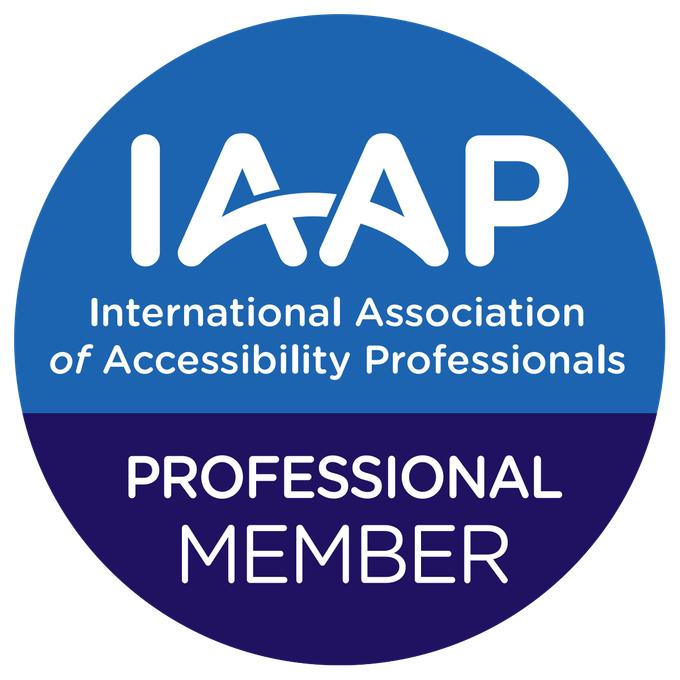Directive (EU) 2019/882 of the European Parliament and of the Council of 17 April 2019 on the accessibility requirements for products and services
Available here
What are the current rules, how and when will they change? Are there exceptions?
All EU member states were required to transpose and implement the European Accessibility Act (EAA) for both private and public sector products and services into their national accessibility laws by June 28, 2025. From this date, companies must ensure that new products and services placed on the market are accessible. In the private sector, the law applies to companies with more than 10 employees and an annual turnover exceeding 2 million euros.Which services and products are covered by the law?
Due to their growing importance for communication and economic participation, digital technologies are the focus of the European Accessibility Act. The EAA does not apply to all products but only to an exhaustive list of items:- Specific hardware: The directive covers what is referred to as universal computing hardware systems, including operating systems. This includes classic desktop computers and end devices such as laptops, smartphones, and tablets.
- Electronic communication devices: Includes products with interactive features used for electronic communication services, such as mobile phones, tablets, modems, or routers.
- TV accessories, streamers, gaming consoles, etc.: Includes consumer devices with interactive features used to access audiovisual media services.
- E-readers: Portable reading devices must be usable by people with reading impairments, including visual impairments, e.g., by being equipped with voice output.
- Self-service terminals: Includes mainly cash machines, ticket vending machines, information kiosks, and check-in machines.
Which services are affected?
- E-commerce: Covers all services provided to conclude consumer contracts in e-commerce, e.g., online sales of products or services such as booking a taxi ride via an app.
- Streaming and TV access services: Includes services that allow access to audiovisual media services, including specific accessibility features. Electronic program guides are also explicitly included.
- Telecommunications services: Covers standard voice telephony, internet telephony, and other forms of digital communication such as email, chat, or SMS.
- Consumer banking services: Includes consumer credit agreements, services related to financial instruments, payment services, payment accounts, and e-money.
- E-books and related software: E-books and e-book software are included in the services.
- Websites, applications, documents, mobile services, e-tickets, and all transport-related information: Applies to websites, apps, e-tickets, and ticketing services. Travel information and interactive self-service terminals, as well as accessibility information about transportation means and surrounding infrastructure (elevators, ramps, etc.), must also be accessible.
Enforcement and Sanctions
As part of the law, EU member states are required to set effective, proportionate, and dissuasive sanctions. In many member states, competitors or consumer protection organizations can issue warnings for violations. Enforcement measures go beyond traditional fines and include product recalls and bans, as well as deterrent sanctions. From June 28, 2025, customers will be able to file complaints before courts or national authorities if services or products do not comply with the new rules.What are the common accessibility requirements in the law?
The European Accessibility Act specifies product and service features that must be accessible to people with disabilities. The law uses functional EU accessibility requirements. Importantly, this EU law does not specify a technical standard like WCAG to ensure compliance but provides only general guidelines (Annex I) and examples (Annex II), allowing room for innovation and flexibility. Therefore, it is essential to check each EU country’s national accessibility laws separately.- General requirements reference: Annex I – European Accessibility Act
- Examples reference: Annex II – European Accessibility Act
| Legal Requirement | Example (Non-Binding) |
| Provide at least two sensory communication methods | User instructions appear as both text and voice output. |
| Ensure contrast between background and text | Add a high-contrast option. |
| Ensure physical ease of operation | Buttons should be easy to press. |
What are the exceptions?
Despite the comprehensive requirements, some exceptions apply. First, specific website and application content, such as mapping services or certain archives, are excluded. Additional specific exemptions:- Micro-organizations with up to 10 employees (applies to services, partial exemption for products); however, all micro-enterprises are encouraged to make their products and services accessible.
- If compliance would lead to a “fundamental alteration” of the product or service.
- If compliance imposes a disproportionate economic burden (based on a cost-benefit test specified in the EAA).
- Existing service contracts signed before the implementation date may continue unchanged.
Next Steps: Priorities for the Next 12 Months
- Check if your products and services are within scope
- Evaluate whether your products and services fall under the EAA’s jurisdiction.
- Consider possible exemptions and transition periods.
- Map out the relevant accessibility requirements
- Determine the obligations applicable under the EAA based on product/service relevance and national legislation.
- Identify necessary modifications in design, information, and labeling.
- Assess contractual implications with consumers and supply chain partners.
- Establish internal projects with stakeholders and supply chain
- Engage different business teams early, including developers, UX designers, marketing, and customer support.
- Coordinate interactions with relevant players in the supply chain, such as manufacturers and importers.
Legal Status in EU Member States
The EAA is a directive, not a regulation, meaning it does not take effect in EU countries without national legislation. Each country must enact its own laws to implement the EAA. Below is the legislative status in five major economies:Germany
- Law: BFSG (Accessibility Strengthening Act), enacted in 2021, incorporates the EAA into German law.
- Penalties: Up to €100,000 fine for non-compliance.
- Exemptions: Applies to businesses with more than 10 employees and annual revenue above €2 million.
Italy
- Law: Amendment to the Stanca Act (2020), applying accessibility requirements to private businesses.
- Exemptions: Businesses with annual revenue below €500 million over three years.
Spain
- Law: Ley 11/2023, requiring compliance with WCAG 2.1.
- Penalties: €5,000 – €300,000 fines.
- Exemptions: Existing products only need compliance by 2030.
France
- Law: Decree No. 2023-931 incorporating the EAA.
- Penalties: €1,500 – €30,000 fines.
Netherlands
- Law: Various sector-specific accessibility laws.
- Penalties: Up to €900,000 based on company revenue.
| Country | Existing Laws | Mandatory standard for EAA for the private sector | Financial penalty | Exemptions for the private sector |
| Germany |
|
BFSG Barrierefreiheitss tärkungsgesetz | Up to 100 thousand euros | Exemptions for the private sector |
| Italy | Stanca Act 2004 | article 29 of the Stanca law | Up to 5% of a company’s annual turnover | Private with a revenue turnover of 500 million euros in three years |
| Spain | UNE 139803 2012 Public and private dealing in finance, travel and online sales with a turnover of over 6 million euros WCAG 2.0 | Ley 11/2023 | €5,000 – €300,000 | EAA Exempt No existing products, existing products only in 2030 |
| France | Law 2005-102 (Private) RGAA, 2009 According to WCAG | Decree No. 2023-931 | €1,500 – €30,000 | EAA Exempt |




